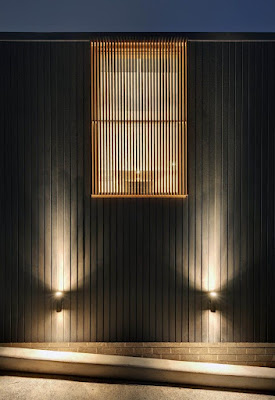Illuminating Mind and Soul - Lighting Psychology


In the world of interior design, lighting serves as more than just a functional element; it is an artistic tool that can transform the way we perceive and experience a space. When light interacts with interior materials, magic happens. The interplay between light and materials can enhance textures, highlight architectural details, and create breathtaking visual effects. In this blog, we explore the enchanting relationship between lighting and interior materials, and how it contributes to the beauty and allure of our living spaces. Both Sunlight and artificial lighting works differently when interacted with materials. The purpose of this blog is to focus on the effects of artificial lighting on materials.
Architectural interior lighting has the power to emphasize the textures and surfaces of various interior materials. Whether it's the rough texture of exposed brick walls, the grain of natural wood, or the smoothness of marble countertops, well-placed lighting brings out the inherent beauty of these materials. Up lighting or grazing techniques can accentuate the texture and add depth to the surfaces, creating a sense of richness and dimension.
Interior materials play a significant role in shaping the architecture of a space. Architectural lighting can be used strategically to accentuate these architectural features and draw attention to their uniqueness. Columns, arches, moldings, and beams can be illuminated to become stunning focal points, adding drama and grandeur to the overall design. One example of such lighting interaction can be seen in outdoor Lighting
 |
| Source: Google |
Lighting is not just about what is seen; it is also about what is concealed. Shadows, created by the interaction between light and materials, can add drama and intrigue to a room. Depending on the angle and intensity of the light, shadows can add a sense of mystery and elegance, making the space feel dynamic and alive.
 |
| Source: Google |
Certain interior materials, such as glass, mirrors, and polished surfaces, have the ability to reflect light. When light interacts with these materials, it creates a dance of reflections, bouncing light rays around the space and creating a visually stunning effect. This play of light and reflection can make a room feel more spacious and bright, making it particularly effective in small or dimly lit areas.
 |
| Source: Google |
Translucent materials, such as frosted glass, paper, or sheer fabrics, offer a unique opportunity for lighting to shine through and create a soft, diffused glow. This effect adds a touch of elegance and serenity to the space, making it ideal for creating a soothing ambiance in bedrooms, bathrooms, or living rooms.
The color of interior materials influences how light interacts with them. Light-colored materials reflect more light and can help brighten a room, while darker materials absorb light and create a cozier, more intimate setting. The harmony between material color and lighting is crucial in establishing the desired mood and atmosphere in a space.
 |
| Source: Google |
Conclusion
Lighting is a powerful tool in interior design, and its interaction with interior materials creates captivating visual experiences. From highlighting textures and architectural features to creating dramatic shadows and reflections, lighting elevates the beauty of materials and adds depth and character to a space. Interior designers and architects alike harness this interaction to craft spaces that not only function well but also evoke emotions and enchant the senses. The synergy between light and materials is what makes a room come alive, turning it into a work of art that ignites the imagination and leaves a lasting impression on all who enter. So, let the dance of light and materials illuminate your living spaces, revealing the beauty within and creating a world of enchantment and allure
Comments
Post a Comment